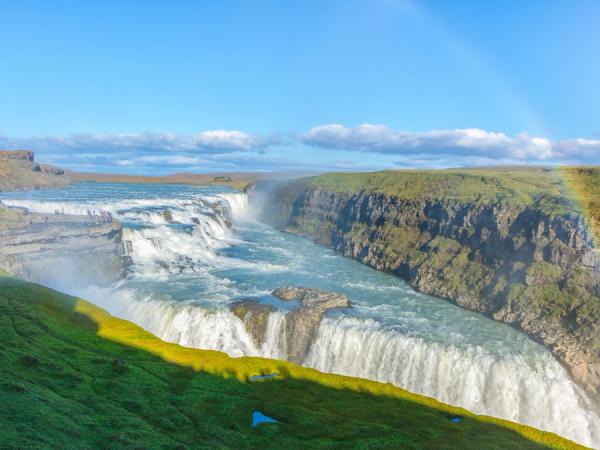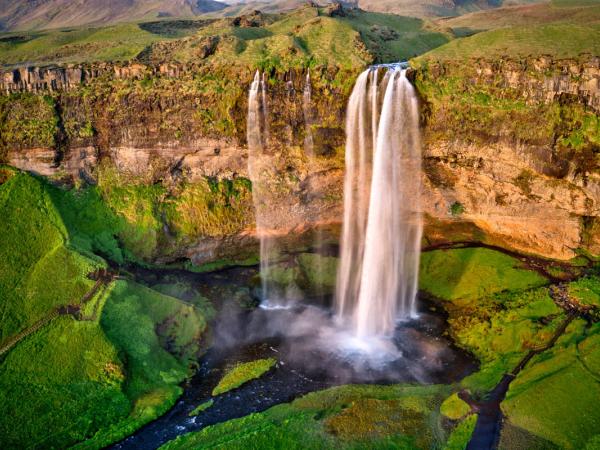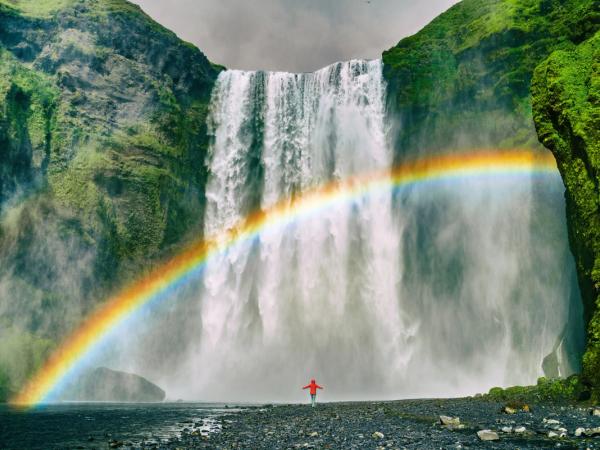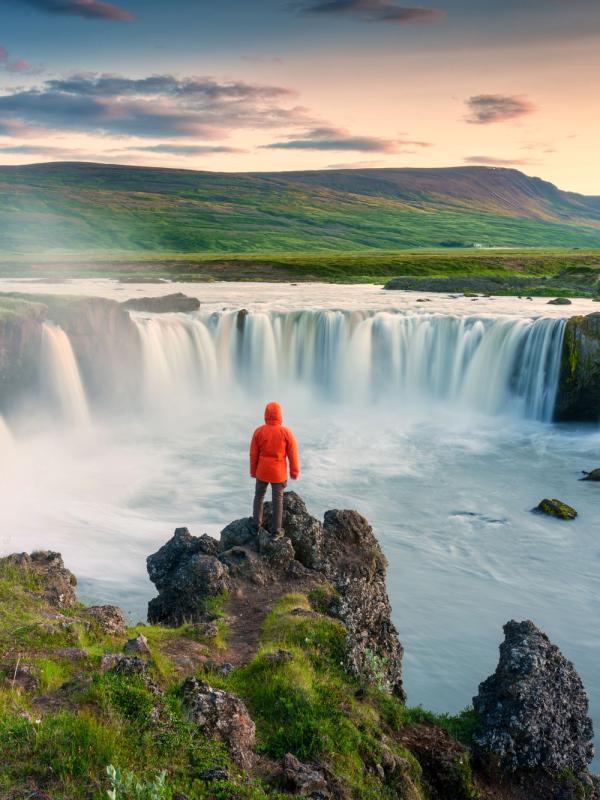
The Ultimate List of Things to Do In Iceland: 24 Unmissable Activities
Many visitors love the idea of jumping on a flight to head out to Iceland. Its volcanic landscapes and vibrant culture attract visitors from many different countries because it’s a country with a lot to offer, including the fascinating Viking history and lively festivals where locals get together for fun. There really is something for everyone.
So, what we have done in this guide is highlight some of the things that Iceland is known for. Even though we cover just 24, we will leave the rest to your imagination. Now, let’s waste no more time and jump right in.
1. Stroll Through Reykjavík’s Culture-Filled Streets
The colorful streets of Reykjavík are alive with music, art, and friendly Icelandic chatter. But if you're more ‘artsy’, you can also take a peek at Harpa Concert Hall’s grand architecture, a beautiful place to visit even if you aren’t much of a concertgoer! If museums are more your thing, why not visit the National Museum of Iceland or the Reykjavík Art Museum to learn more about Iceland’s rich and interesting history?
During the day, you can shop along Laugavegur, Reykjavík’s top shopping spot, or have a stroll down by the old harbor, where you will come across unique cafés tucked away in the alleys. Once the evening falls, grab a bite to eat and make your way to a local bar to enjoy traditional live music gigs that often stretch late into the night. Or if you are in the mood for an even bigger night, don’t just stop at one, but visit as many as you like! You wouldn’t be the only one.
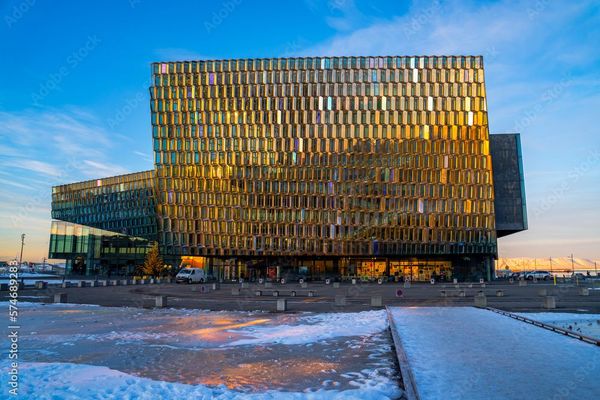
2. Marvel at the Látrabjarg Cliffs
The Látrabjarg Cliffs in the Westfjords, about a six-hour drive from Reykjavík, are at an incredible height, reaching around 1,400 feet above the Atlantic Ocean. Also, it’s as though the green fields on top blend into the deep blue waters below, and on clear days, you might catch a glimpse of seabirds like puffins perched along the ledges.
But if you want a closer look, you can hop on a boat tour from nearby Patreksfjörður, where you’ll see these steep rock faces up close—maybe even a puffin hiding in one of the cracks. Just remember to bring a jacket because the Atlantic winds can be pretty strong. There’s also a small visitor area if you want more information and plenty of winding pathways that offer different views of the cliffs. It’s easy to spend a few hours here, soaking up the scenery at your own pace.
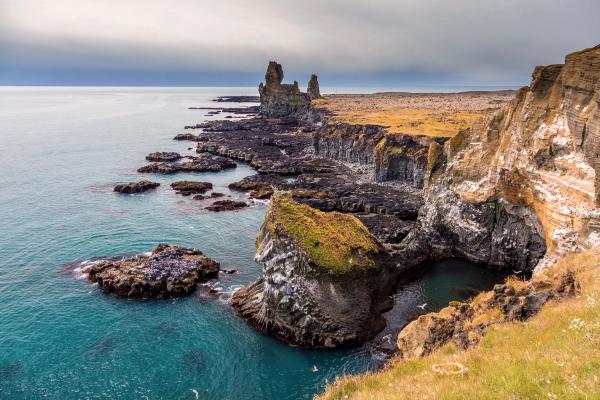
3. Experience Iceland’s Ring Road
The Ring Road is Iceland’s scenic driving route that circles the entire country. It winds through volcanoes, glaciers, and charming fishing villages. Enjoy stunning coastal views, and don’t miss popular spots like Jökulsárlón Glacial Lagoon, where floating icebergs sparkle in the water.
Make sure to plan at least a week (longer is better) to explore the Ring Road. You’ll want to frequently stop for photos, and don’t miss all the spots along the South Coast or even places to relax, such as the Vök Baths in East Iceland.
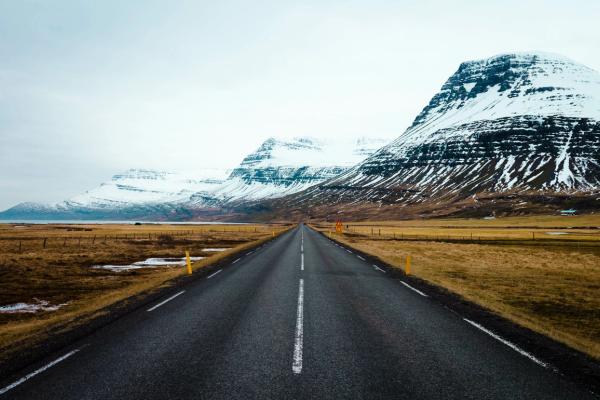
4. Lose Yourself in Akureyri
Famous around the country, Akureyri is often called the “Capital of the North.” Akureyri has a lively atmosphere, especially around Hafnarstræti, where street art brightens up everything around you. In the town center, you’ll bump into buskers playing music, and you can browse local boutiques selling hand-knit Icelandic sweaters. Actually, you may as well also pick up a coffee or a local craft beer and take a moment to watch the world go by!
If that is not quite you, you can enjoy live music at the local bars, where the tunes might give you energy to explore the Akureyri Church or the Botanical Garden and maybe even finish your night strolling by the waterfront for panoramic views of the fjord.
If you’re exploring the region, check out this article on things to do in North Iceland for more ideas!
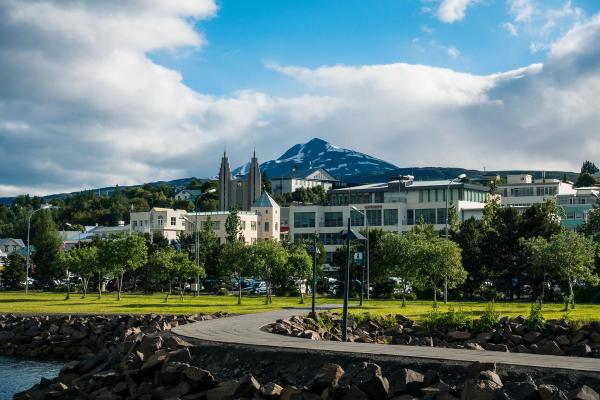
5. Wander the Snæfellsnes Peninsula
The Snæfellsnes Peninsula, northwest of Reykjavík, is a land of wild beauty with volcanoes, lava fields, and dramatic coasts. You might hear locals chatting about old sagas here, adding to the authentic experience. But overall, the weather can be unpredictable, and that's part of its charm.
Snæfellsjökull National Park offers hiking trails around the iconic glacier-capped volcano, while the black-pebble beach of Djúpalónssandur feels like an Icelandic fairy tale. Kirkjufell Mountain, the most photographed place in Iceland, is also here. And the Lóndrangar cliffs are also worth visiting. This region is perfect for those who love remote, untamed landscapes.
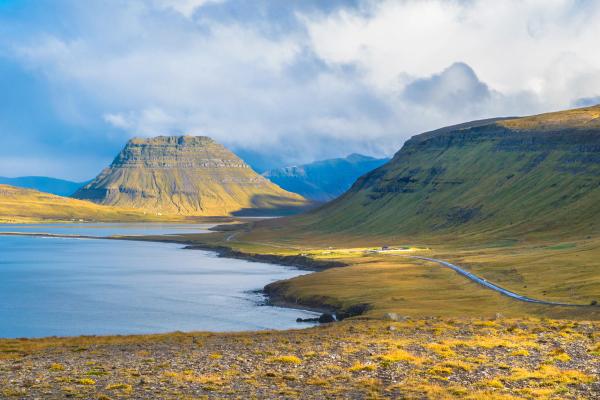
6. Explore the Basalt Columns of Reynisfjara
Reynisfjara Beach, located near the village of Vík, is known for its unique black sand and towering basalt columns formed by ancient volcanic activity. According to some stories, the basalt stacks were once trolls caught in the sunlight, instantly turned to stone. Whether you believe the legend or not, it’s a breathtaking sight.
It’s not the place to be brave: “sneaker waves” can sweep in unexpectedly and drag you in. Please, don’t go anywhere near the shore. The café near the beach is a great place to grab a coffee and a warm soup. You wouldn’t want to miss this special corner of Iceland!
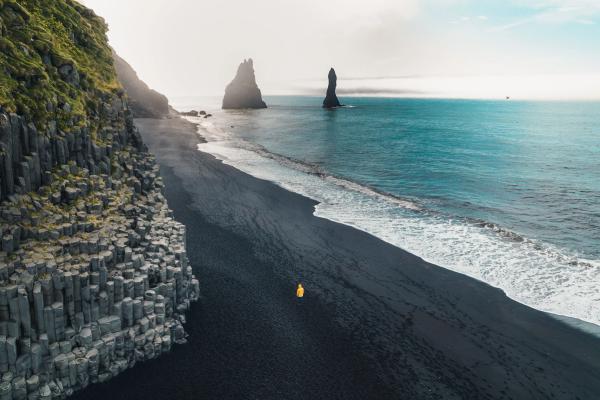
7. Chase Iceland’s Stunning Waterfalls
If you’re into waterfalls, Iceland has some of the most amazing ones to check out. Close to Reykjavík, you’ve got Gullfoss, Skógafoss, and Seljalandsfoss. Gullfoss is big and powerful, dropping into a deep canyon. Skógafoss is tall and loud, and you might even see a rainbow if the sun’s out. Seljalandsfoss is really cool because you can actually walk behind it and see the water from the other side. Heading east, Hengifoss stands out with its colorful rock layers, and nearby Litlanesfoss is surrounded by these super unique, tall basalt columns.
Up north, Goðafoss, or the “Waterfall of the Gods,” has a wide, horseshoe shape and turquoise water. That one is quite the stunner! Not far from there is Dettifoss, which is so powerful that you can feel the ground rumble right under your feet! Over in the Westfjords, Dynjandi is a big, layered waterfall that kind of looks like a giant staircase. And on the Snæfellsnes Peninsula, Kirkjufellsfoss is right in front of the pointy Kirkjufell mountain. There are so many other breathtaking waterfalls that it’s really hard to choose. So keep your eyes open while you’re exploring!
8. Bathe in the Blue Lagoon
Just outside of Reykjavík, the Blue Lagoon is Iceland’s famed geothermal spa, where visitors are encouraged to immerse themselves in the milky-blue waters that are rich in minerals believed to be good for the skin. The lagoon’s history comes with many tales and myths about its healing properties, but this doesn’t stop tourists from wading in and lathering up with silica mud masks, just in case!
Apart from the waters themselves, the surrounding lava fields in the Reykjanes Peninsula are worth exploring, too. You will find gorgeous volcanic landscapes, hidden pockets of geothermal activity, and even a spa area offering in-water massages.
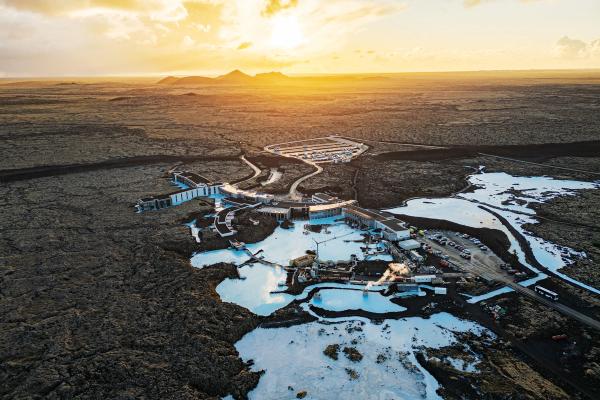
9. Escape to the Westman Islands
Off the south coast of Iceland lie the Westman Islands (Vestmannaeyjar), known for birdlife, volcanic craters, and their unique island culture. Heimaey, the main island, is a must-see. The stunning coastal views here make you feel like you’re standing on the edge of the world.
You can also rent a bike or a car to explore the island’s narrow roads, stopping to chat with locals and, if the season is right, maybe see puffins. Another idea is to cozy up in a local café for fresh seafood chowder and enjoy some local music. Spending the night in a guesthouse on the islands is also a way to soak up the peaceful atmosphere and watch the stars over the Atlantic shine.
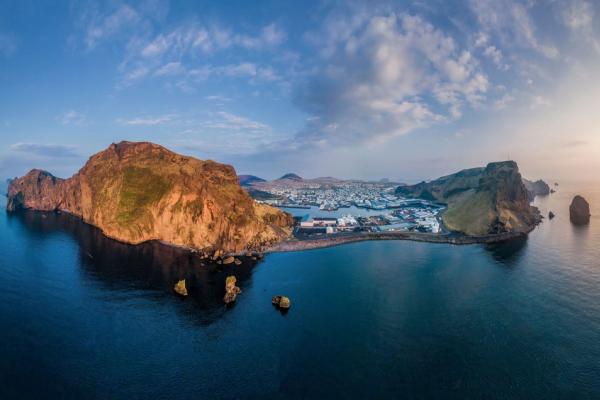
10. Discover Landmannalaugar
Landmannalaugar, in Iceland’s Highlands, is a region of rainbow-colored mountains and steaming hot springs. It's just a few hours from Reykjavík by 4x4 (in summer) and a great place to relax in a natural hot pool, if that's what you’d like. But you can also explore the hiking trails that lead you across lava fields, rhyolite peaks, and vibrant mossy plains, so don't forget to bring your hiking boots!
The Laugavegur Trail, Iceland’s oldest and most famous multi-day trek, starts here and winds through lovely scenery to Þórsmörk. If you’d rather take it easy, you can still enjoy shorter day hikes in the area.
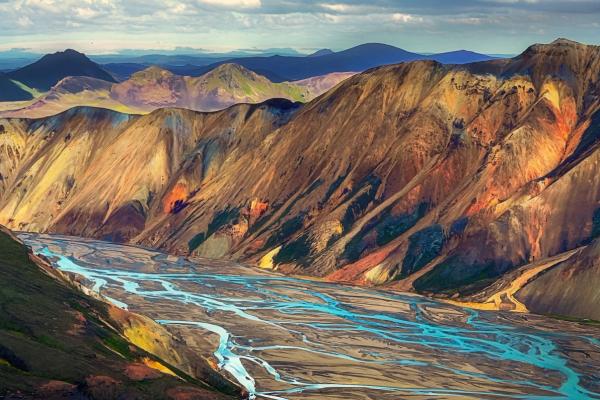
11. Immerse Yourself in Þingvellir National Park
You will find that Þingvellir National Park is home to Icelandic historical landmarks like the Alþingi (Iceland’s first parliament) and the tectonic rift where the North American and Eurasian plates meet.
The area is also well worth a visit for snorkeling or diving in the crystal-clear waters of Silfra. You will get to see an impressive underwater world in all its clarity. Tickets to access tours in Silfra will set you back just over $15 for the parking and entry fees, a pretty good deal. You can also join guided excursions to experience the park’s scenic paths.
For hikers, the national park’s trails are up for the taking, and you should be able to spot patches of wild birch forest as you wander around.
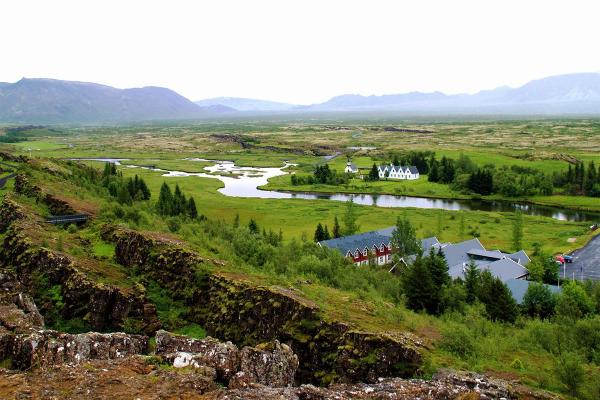
12. Be Transported at Snorrastofa in Reykholt
Another sight to look forward to is Snorrastofa in Reykholt, which is dedicated to the legacy of Snorri Sturluson, the medieval scholar and author of many Icelandic sagas. Once a center of learning, this site has a rich history and features incredible insights into Norse mythology. The 13th-century writings and the geothermal pool (Snorralaug) make it a treat for history lovers.
If you want to hear stories of Viking raids and ancient gods, do a guided tour while overseeing sweeping views of the countryside. The surrounding hot springs give you perfect photos! Stepping onto this ancient site feels like walking back through centuries of Iceland’s complex past.
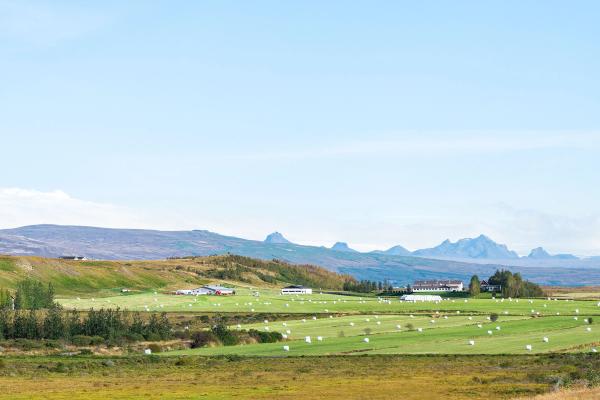
13. Drive the Golden Circle
One of the most popular scenic routes in the country, the Golden Circle, spans about 190 miles from Reykjavík, so this is not one to miss out on. From the erupting hot spring at Geysir to the roaring Gullfoss Waterfall, you’ll travel through an ever-changing landscape. Each leg of the journey reveals hidden geothermal spots, pastoral farmland, and friendly locals ready with a warm welcome.
Whether you tackle the entire drive or just a portion, you’ll witness some of Iceland’s most iconic natural scenes. Watch adventurous travelers braving the chilly weather at Secret Lagoon, or stroll by the visitor center at Geysir to learn about Iceland’s geothermal marvels. If you’re lucky, you might even spot a rainbow above Gullfoss on a sunny day. Þingvellir National Park is also part of the Golden Circle, so you might want to include it on your Golden Circle itinerary, too.
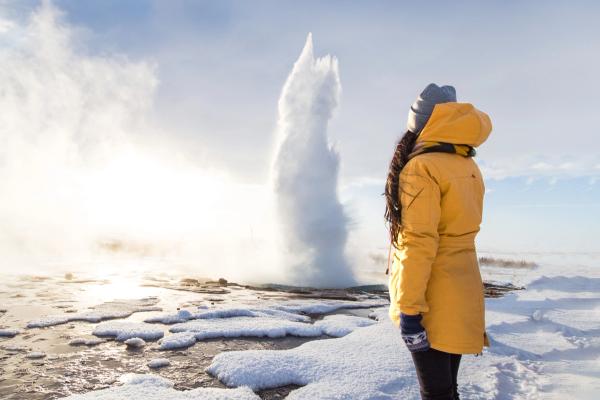
14. Enjoy Traditional Icelandic Music and Dance
Few things capture Iceland’s spirit like a traditional music “session,” or small concert, where locals gather with guitars, fiddles, or even accordions. Lively tunes give way to haunting ballads, telling stories of love, loss, and laughter in every note. Even if you don’t know the words, you won’t resist tapping your feet along.
Reykjavík and Akureyri are excellent for catching regular performances, but smaller towns and festivals often showcase local folk music, too. Don’t be surprised if the music spills onto the street late into the evening. With a drink in your hand and the melodies in full swing, you’ll wonder why you haven’t had a taste of Icelandic music all this time!
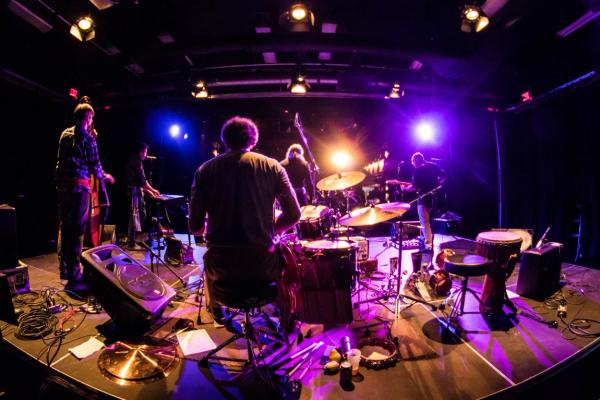
15. Visit the Historic Town of Seyðisfjörður
Seyðisfjörður, with its quaint wooden houses and vibrant art scene, is like a storybook village in the Eastfjords. With sights like the Blue Church, you’ll enjoy walks through the colorful streets and well-preserved heritage buildings. Local festivals and markets are often held within the town, making each visit feel quite festive.
Opposite the harbor, you can see the surrounding mountains that showcase Iceland’s landscapes. There are some cool waterfalls nearby, such as Gufu and Gljúfurfoss, and hiking trails offer amazing views of the fjord and are perfect for taking pictures. Seyðisfjörður, with all its charm, is a place you really must see in Iceland.
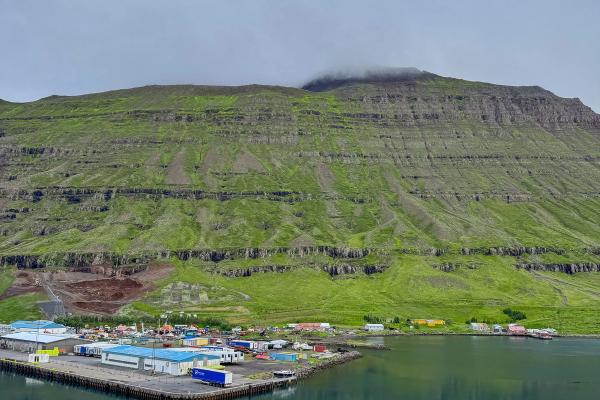
16. Explore Eldhraun’s Lunar Landscape
If you want to feel like you’re visiting the moon's surface, visit Eldhraun in south Iceland. This vast lava field, formed by a late 18th-century eruption, is covered in thick green moss that makes for an otherworldly scene. Also, if you look closely, you’ll see unique moss formations and rocky outcrops that are dotted throughout the expansive plain.
Guided tours provide further chances to uncover hidden lava tubes, caves, and the area’s volcanic history, and nearby villages like Kirkjubæjarklaustur offer cozy cafés where you can warm up with a wholesome meal after a day of exploring.
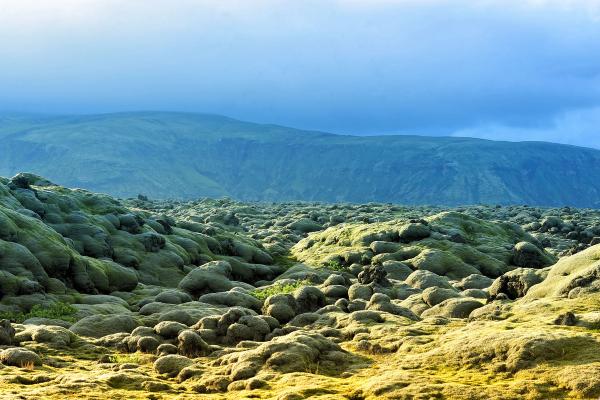
17. Go Turf-House Hopping (Glaumbær, Laufás & More)
Iceland has many historic turf houses to visit, from museum sites to farmsteads you can walk around. Two of the most famous to visit are Glaumbær in Skagafjörður and Laufás near Akureyri, both offering glimpses into how Icelanders used traditional materials to keep warm through harsh winters. Visiting these historic homes can really transport you back in time.
Even if you don’t spend the night, many turf house sites allow day visitors to tour the grounds and learn about old farming practices. You’ll often find small exhibits or cafés nearby, and each site has its own myths and legends, so make sure to ask about folk stories or famous residents to make your experience even better!
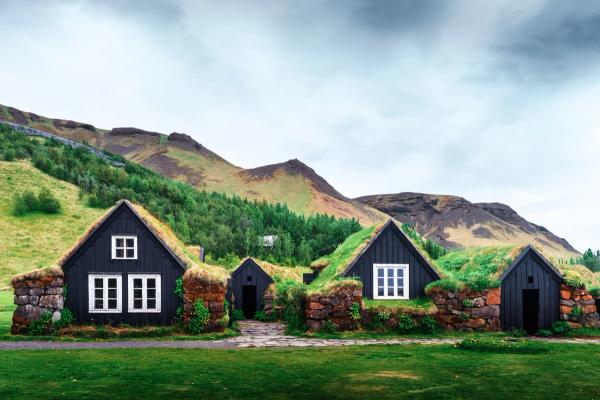
18. Sample Iceland’s Brennivín and Craft Beer
Tours of smaller distilleries and breweries around Reykjavík or Akureyri offer a good glimpse into the process of creating Iceland’s signature spirits, highlighting the importance of pure glacier water and local ingredients. You’ll likely end each tour with a tasting session, learning to notice the subtle notes in Brennivín, sometimes called “Black Death.” Distilleries also experiment with gin, vodka, and other liqueurs if you want to broaden your taste buds.
Beer lovers should try local craft brews from places like Bryggjan Brugghús, where you can learn about the brewing process and enjoy a pint with amazing harbor views. Iceland also has many great microbreweries, so why not try some local beers during your trip? Just don’t go overboard and embarrass yourself!
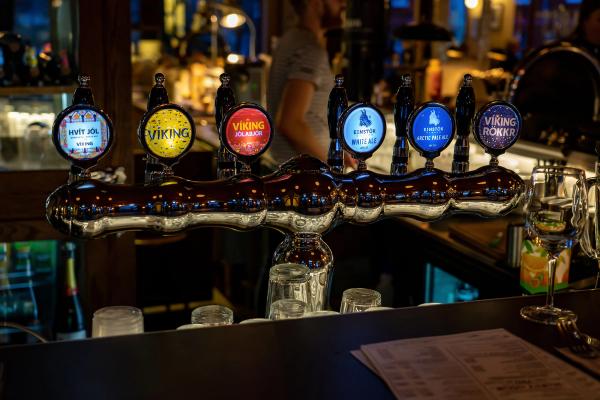
19. Conquer Iceland’s Glacial Peaks & Explore Hidden Ice Caves
Iceland’s breathtaking landscape, sculpted by glaciers and ice, offers unbeatable opportunities for adventure. Glacier hiking is a must-do, with Sólheimajökull on the South Coast being a top spot. Grab crampons and ice axes, and you’re good to go, as expert guides lead you across the glaciers’ ice surface. Be warned, though: the terrain is not for the faint-hearted, but you’ll be rewarded with stunning ancient ice formations and the most scenic mountains and valleys. Don’t forget to wear sturdy boots and dress warmly so the frostbite doesn’t get you!
Now, for a truly unforgettable experience, the Mýrdalsjökull glacier system waits for you to explore its mesmerizing ice caves. The Katla Ice Cave, in particular, is an accessible site when you travel to it from the town of Vik. Within its depths, you’ll embrace an out-of-world experience as walls of ice, infused with volcanic ash are enveloped in a captivating blue hue. For another accessible option, check out the Crystal Ice Cave within Vatnajökull if you’re keen for even more thrills and chills!

20. Take in the Hornstrandir Nature Reserve
You will be amazed by the Hornstrandir Nature Reserve in the remote Westfjords. The cliffs here rise high above the ocean, reaching heights that rival some of the tallest in Europe. They are far less crowded than many of Iceland’s more accessible natural wonders, making them ideal if you like your scenery undisturbed. Hornstrandir is also home to the popular Arctic Fox. They're not easy to spot, so keep your eyes peeled.
If you’re a walker, the rugged coastal paths will be tempting for you, but make sure you’re prepared for changing weather by packing waterproof clothing and proper hiking boots. Hornstrandir is a wild and beautiful corner of Iceland that rewards those who journey off the typical tourist trail.
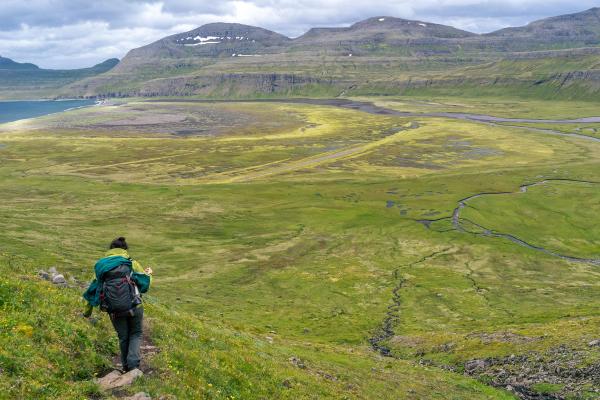
21. Bask in the Lively Streets of Húsavík & Go Whale-Watching
The lively town of Húsavík is known for its great whale-watching scene, fresh seafood, and easygoing charm. Most people come here to watch the whales (and they should), but there are also many other adventures, like climbing up to the Húsavík Church to view the town, taking a self-guided walking tour around the waterfront, and visiting the GeoSea Thermal Baths for some relaxing Ocean views.
For incredible coastal views, you can drive along the Diamond Circle, complete with canyon detours and spectacular waterfalls. And, of course, there are local pubs to check out, where you can stop for a pint while you listen to musicians play traditional tunes by the fire.
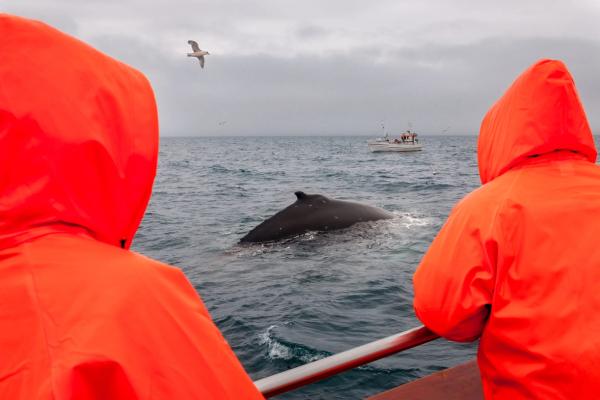
22. Surf the Waves at Þorlákshöfn
If you are missing the surf on your travels or have always wanted to give it a go, head to Þorlákshöfn on the southwestern coast. This area has become Iceland’s go-to for Atlantic surfing. Waves here cater to both newbies and seasoned pros, and surf schools are a great place to get geared up. It might be chilly, but the thrill of riding Icelandic waves is well worth the goosebumps.
When conditions are calmer, nearby golf courses are worth a visit since they’re celebrated for their stunning ocean views. Charming cafés and restaurants line the roads, offering warmth and comfort after a day in the chilly water. If you get excited by the idea and experience of frosty waves, then Arctic surfing in Iceland might be your next best adventure to try.
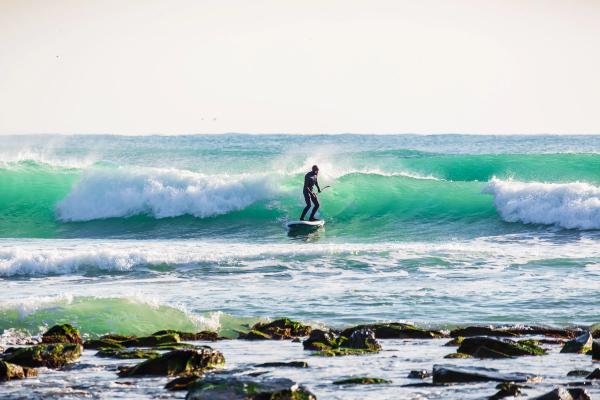
23. Step into Viking-Era History at the Settlement Exhibition
The Settlement Exhibition in Reykjavík showcases Viking-era ruins discovered beneath the city, dating back to around 871 AD, so it’s older than most medieval landmarks in Europe! During winter, this underground site gives you a look at how early Icelandic settlers lived. But if you want to see it in a less crowded setting, make sure to go in the morning, as it can get busy on weekends.
You can also join a guided tour to learn how people built turf homes using simple tools. Close by, there are interesting places that show the city’s history. The surrounding downtown streets add to the experience and give you a feel for what life might have been like long ago.
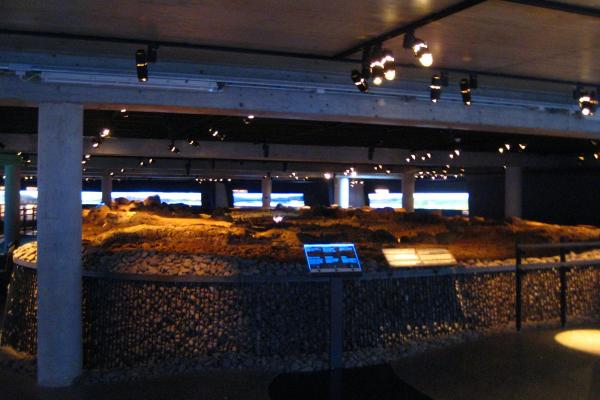
24. Catch an Icelandic Handball or Glíma Match
If you’ve seen Icelandic handball, you might think it looks like a high-energy, fast-paced sport, and it’s actually one of Iceland’s national obsessions. Along with glíma (a form of traditional wrestling), it’s a big part of Icelandic culture, known for its unique gripping techniques, and is a fast, action-packed sport. If you watch a match, you’ll see why Icelanders love it.
If you can, try to get tickets at Laugardalshöll in Reykjavík or your local sports hall during the tournament season. The energy at games is contagious, with supporters dressed proudly in team colors and roaring at every point. It’s a fantastic way to go deep into Iceland’s community spirit and feel the nation’s pride through sport.

Iceland Is Calling!
If you think about it, Iceland really does offer a mix of history, stunning scenery, and friendly people. From Reykjavík to the remote Westfjords, you'll find unforgettable experiences, like coastal drives, traditional music, and tasting Brennivín. This list provides just a starting point for your Icelandic adventure, but don’t just take our word for it. Go and see for yourself. Your adventure awaits.

